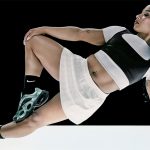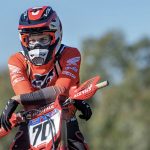The second official Industry Breakfast, held by the Outdoor Industry Association catered to a full house and left most in attendance with the very feeling of community that OIA was trying to impart. The two keynote speakers, PBS Americas Walking host Mark Fenton and Congressman George Miller from California, came at the same issues from very different angles.
Fenton through his self-deprecating humor counterbalanced with disturbing key statistics showed the assembly the true nature of the health problem in the U.S. Many of the issues the OIA is addressing the obesity epidemic, the shrinkage of natural spaces can be solved through Fentons approach of local community advocacy.
His point is that the best place to help establish greenways and parks, which are the heart of growth for the outdoor industry, is in local communities. Individual activism at city hall, especially when backed by the OIAs powerful economic message, can change local communities to support the active lifestyle.
Congressman Miller made much the same point, but on a national level. “When Congressmen get a half dozen letters, they think a movement is going on,” He said. “When they receive a dozen, they start to think its a revolution.”
His point was that it does not take much to get a lawmakers attention when concerns arise from the constituency. Making the voice of the outdoor industry heard needs to start locally and make its way into national policy making.
OIAs President, Frank Hugelmeyer was very pleased with the outcome of the breakfast. “We had a great response,” he said. “The breakfast went well. By our estimates we had around 470 people show up.”
In addition to the networking opportunity and the top-quality speakers, the OIA provided everyone in attendance with a copy of their report entitled A Targeted Look at Participants with Potential, based on work conducted by Harris Interactive.
This report looks at participation in human powered outdoor activities with an eye on those who are currently not participating and would like to, as well as those who are participating and are interested in new cross-over sports. The report also provides an overview of underserved markets that have much potential such as Hispanics, Youth, 45+ singles and females.
The report reiterated some of the findings released at the OR Winter Market Industry Breakfast, and revealed many new key data points as well. While the top three gateway activities remain paved road cycling, tent camping and hiking, the top three sports with the most likely cross-over appeal are paddlesports, hiking or backpacking and either road or mountain biking.
It is also interesting to note that of the non-participant strivers – those who do not participate in any human powered outdoor activities but would like to – the demographic is considerably different than current participants. The average age of a striver is almost five years higher at 43, nearly 60% are female, and 50% have a high school education or less. The average household income for strivers is estimated at $42,500, compared to $62,500 for current participants.
The report also categorized different human powered outdoor activities according to lifetime spending. The report takes into account the percent of the U.S. population that participates as well as the average amount each participant will spend during his or her lifetime.
Road cycling topped the list with 48% of the country participating, and the average person spending $5,485 on equipment and $3,647 on apparel. Second was camping with 47% of the population participating and each person spending $5,417 on equipment and $3,001 on apparel, while hiking came in third with a 43% participation rate and each person spending $5,574 on equipment and $2,729 on apparel.
The four underserved markets that show the most potential for growth youth, Hispanics, 45+ singles, and females are each studied in detail in the report. Key findings in the youth market (ages 16-24) were that this group participates more often in more challenging activities like climbing, trail running, skiing and snowboarding. The OIA also states that keeping this group engaged in human powered outdoor activities and expanding their base of activities is crucial.
While the number of Hispanics who participate in human powered outdoor activities is only about 14% of the total participation base, this number has the potential to easily double in the next few years. Additionally, Hispanics make up the largest non-white group of outdoor participants in the U.S. The report found that younger Hispanic participants show “above average interest” in camping, paddle sports, cycling, climbing and snowboarding. The report makes it clear that there could be significant opportunities for companies that simply decide to distribute Spanish consumer catalogs in the U.S.
The 45+ singles demographic is not one that receives a lot of attention; however according to the OIA and Harris Interactive, baby boomers are staying active longer, and participate more often in the sports they enjoy. On average 45+ singles participate 3 times a month per activity, and 44% of this demographic currently participate with another 28% who would consider trying a new activity.
The female market has been steadily growing as a key focus for the outdoor marketplace, and rightly so. 61% of this demographic participate in one outdoor activity or another and an additional 24% are likely to pick one up in the next 2 years. On top of this high potential participation rate, women control much of a familys income and its leisure time activities, effectively doubling their spending power.
This report is also available free to OIA members. Non-members can contact can contact Julie Meyers at 303-444-3353.















